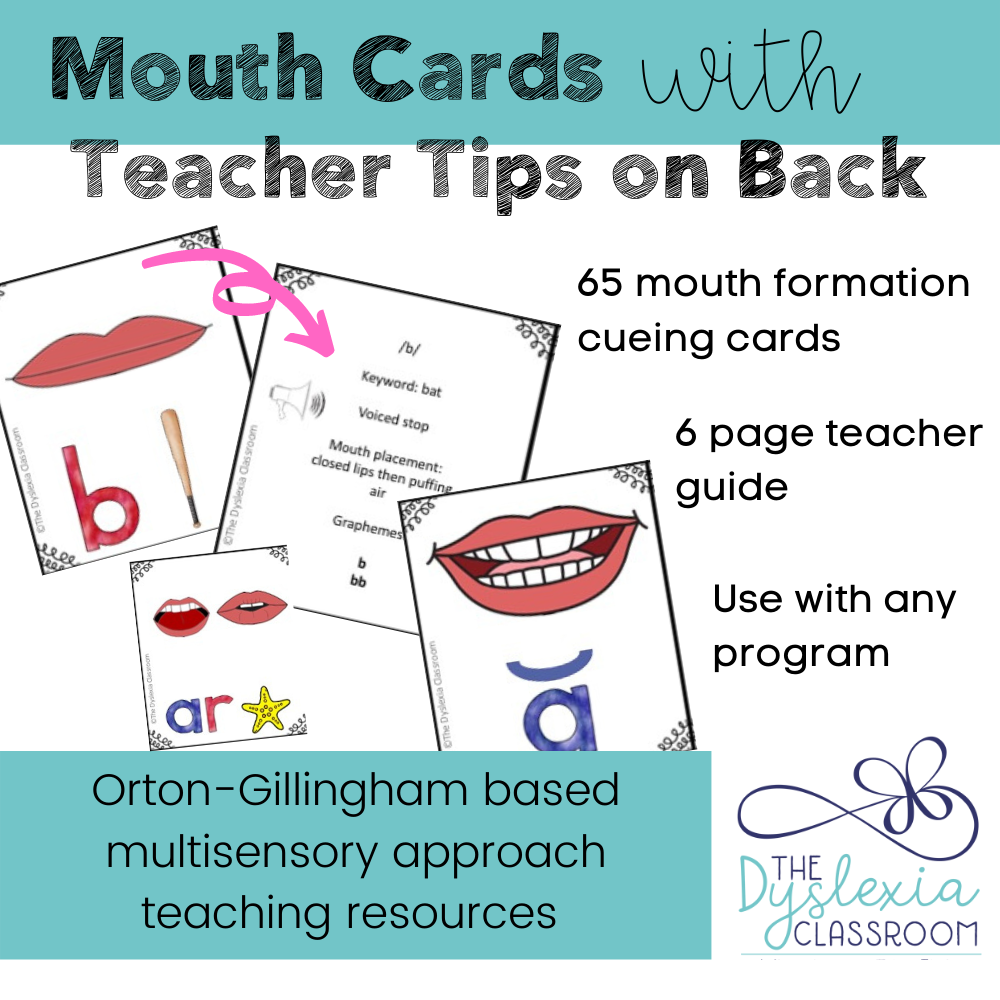Why You Should Analyze Your ABC Chart

When we think of classrooms, we almost always envision an alphabet with pictures posted somewhere in the room. We may not realize that the keywords or images used in alphabet posters and books matter - a lot more than you may think! Many cute and colorful alphabet posters are available, and we may gravitate toward what is aesthetically pleasing, but these are not the best choices for our students and classrooms.
Analyzing Our ABC Charts - Why It Matters
Reading is the ability to connect spoken sounds to their letter representations. We want students to elicit the smallest unit of spoken sound, or phoneme, in its purest form. For this reason, being mindful of keywords is essential.
What does this mean? The ability to segment phonemes (sounds) into their smallest units and then blend those sounds into words is what is needed to read and spell. Keywords or pictures we choose to link to graphemes (letter/s) need to connect directly to the individual phoneme (sound).
In English, soun...
Learning Through Sand Play
This is part 2 of the Learning At The Beach series. Click HERE to read part 1.
We made it back home from our fun-filled week at the beach with buckets of shells and happy hearts. 🌊 While it was a week full of fun, we also snuck in some learning. Last week, I shared how we played activities like "Beat the Wave" and "Sandy Sound Dictation." This week, I'm sharing some more activities that we played in the sand as part 2 of the mini-series, Learning at the beach.
One of the powerful reminders for us as parents and educators is that it is possible to play with a purpose. Playful learning can set the stage for enjoyable interactions, reduce the stress sometimes associated with reading, and engage students in reading tasks while still focusing on a learning objective. Here are some additional games/activities that we played at the beach. Whether you are headed to the beach this summer or spending it at home or elsewhere, you can certainly bring these activities into your day.
Learning...
Teaching The Schwa Sound
I am heading off to the beach this week and looking forward to a "less stressed" and relaxing time. You may be asking, what does this have to do with reading instruction?

The English language is stress-timed, and when spoken, there is a natural rhythm and fluidity that aids in comprehension, pronunciation, syntax, and expression. The impact of the stressed and unstressed syllables determines spoken sounds, especially vowels.
Stressed And Unstressed Syllables
Before my therapist training, I had never thought about the impact of stressed and unstressed syllables on spelling, pronunciation, syntax, and meaning. I honestly didn't know that the English language is a stressed-time language or what that meant for instruction. Now, I see that explicitly teaching the concept of stressed and unstressed syllables to my students aids in their decoding, encoding, and comprehension.
A stressed syllable is the part of the word that receives a stronger syllable mark. This is noted by the art...
How Does Scooping Phrases Help Fluency?
Recently, I've gotten a lot of questions about fluency and how to teach scooping. I made this video 👆 to help answer some of your questions and share a tip I have for building scooping skills.
How To Build Fluency
There is also a past blog post, Building Fluency In Our Students, that you might want to read for more information about this. Find it HERE.
Need more support?
Please feel free to contact me or let me know what questions and topics you wish to have answered.

This information is the intellectual property of @2016 The Dyslexia Classroom. Do not use or repurpose without expressed permission from The Dyslexia Classroom. Please give The Dyslexia Classroom an attribution if you use, reference, or quote/paraphrase copyrighted materials. This includes but is not limited to blogs, social media, and resources.
The Multiple Learning Opportunities of a Spelling Dictation Lesson
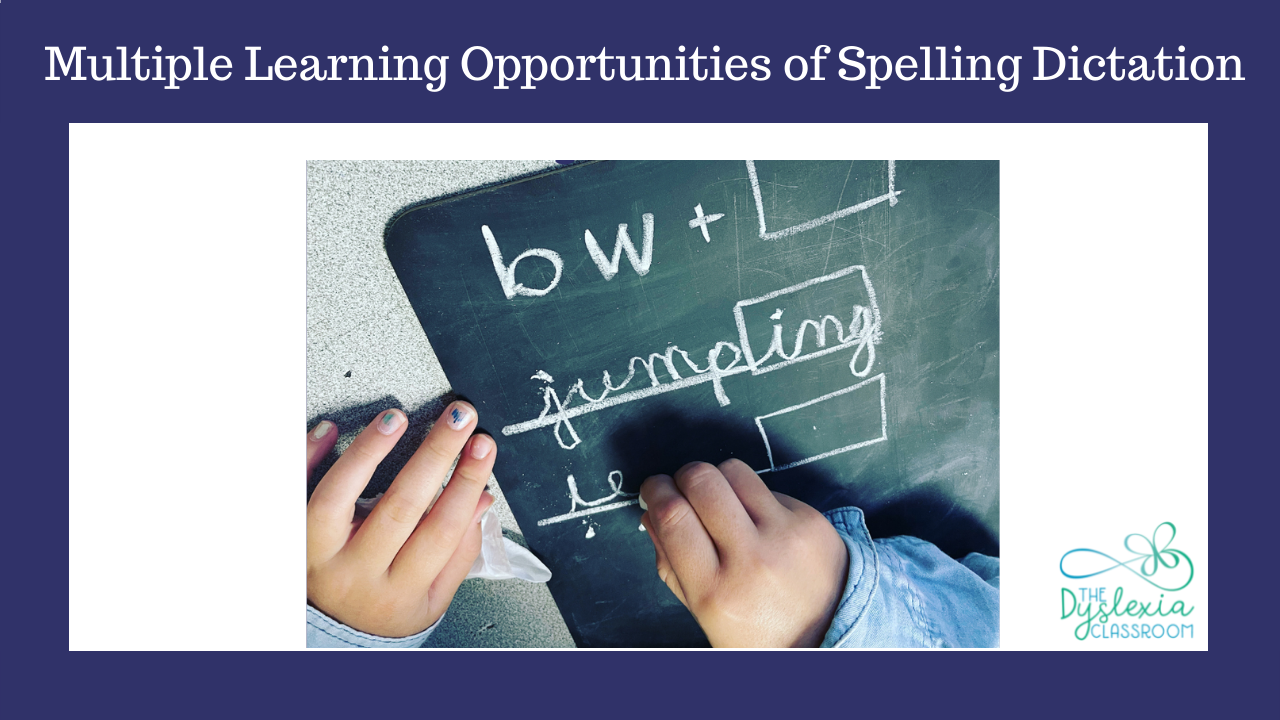
It is said that a picture is worth a thousand words. I like to snap photos of small moments in lessons and reflect on all we've accomplished. It's like a window into learning. I believe in finding ways to have every task target and reinforce multiple aspects of learning. This little photo is a perfect example.👇
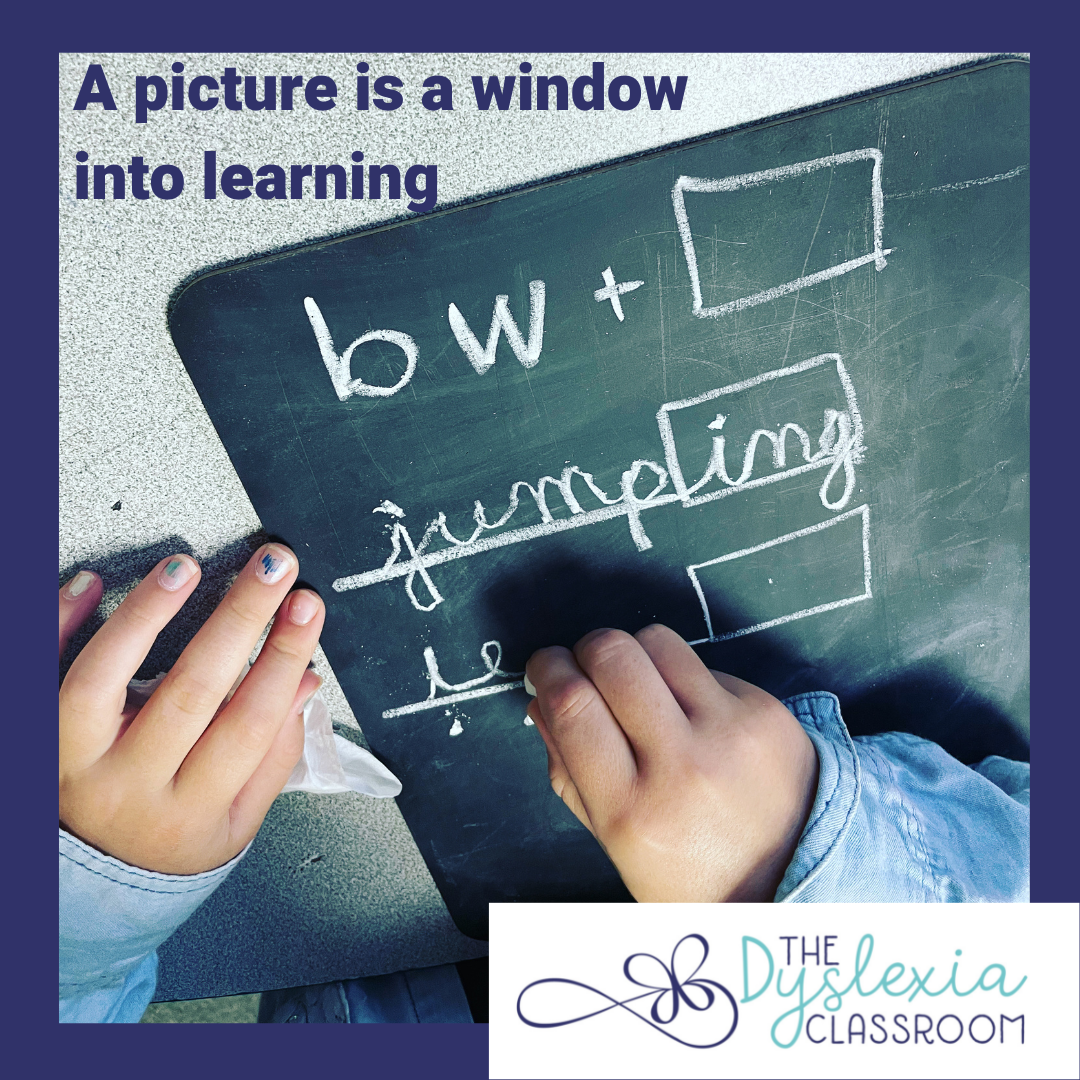
There is so much happening in this simple snapshot of a spelling dictation within a lesson! While this portion of the lesson is generally 5-7 minutes, you can see how much is covered and reinforced - a lot!
Multi-Sensory Handwriting
Our goal is to always move towards the automaticity and fluidity of writing. We can promote the practice of letter formation strokes in a multi-sensory way (chalk, sand trays, play dough, sandpaper, shaving cream, etc.). Practicing letter formations, the same way, creates the muscle memory needed to make handwriting automatic.
When students have labored handwriting, it impacts their ability to focus on the higher-level writing tasks because th...
How to Help Students with Reading Stress and Anxiety
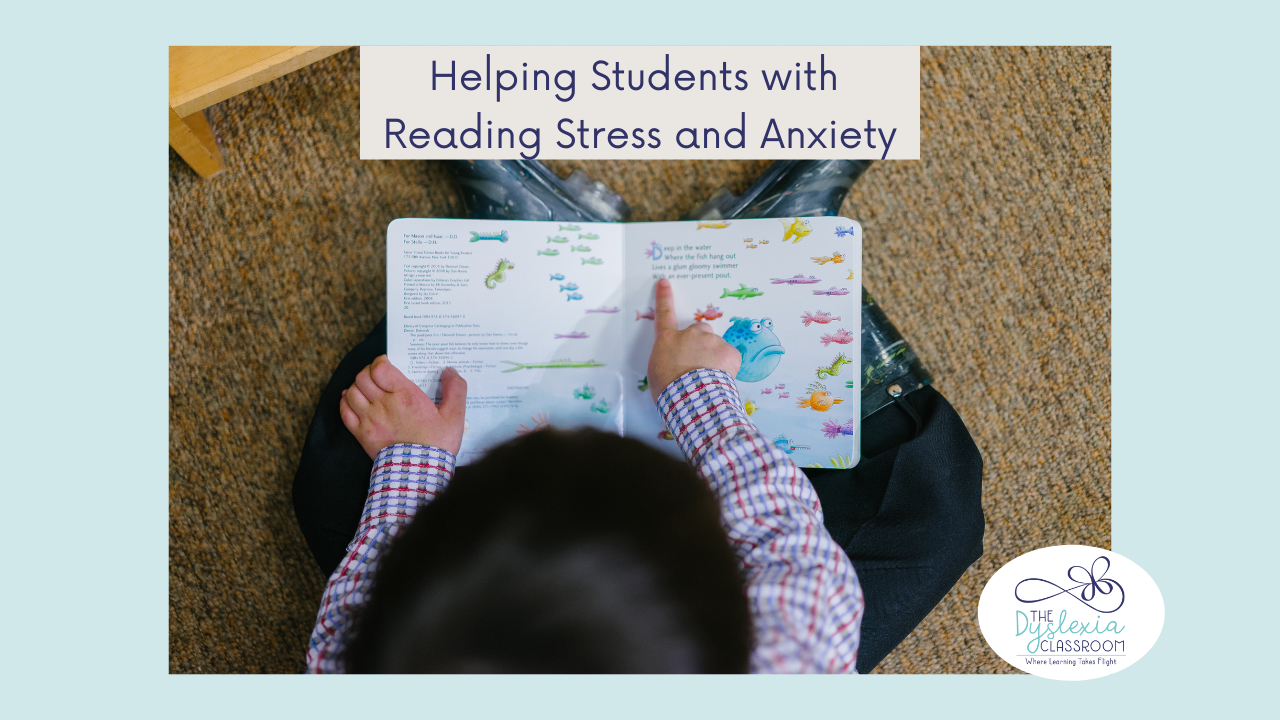
When our children enter school, it is often filled with excitement and a desire to learn. Children, their families, and teachers begin their journey into education with the idea that reading will be unlocked as the lessons unfold. This reminds me of one of my favorite books, Thank You, Mr. Falker, by Patricia Pollacco. The book's family gathers around a little girl as she is about to embark on her year in kindergarten and shares how she will learn to chase knowledge through the pages of books.
Reading is ingrained in us at a very young age with great importance. We know this is true for many reasons, but the student struggling with acquiring this skill may begin to feel anxiety and stress surrounding their struggles to unlock the words on the pages.
These students see their peers choosing chapter books while they are still reading from an assigned book basket. They recognize that their peers complete writing assignments when they have just gotten their ideas organized. They may not...
Decodable Books Are Stepping Stones Needed To Access Authentic Text
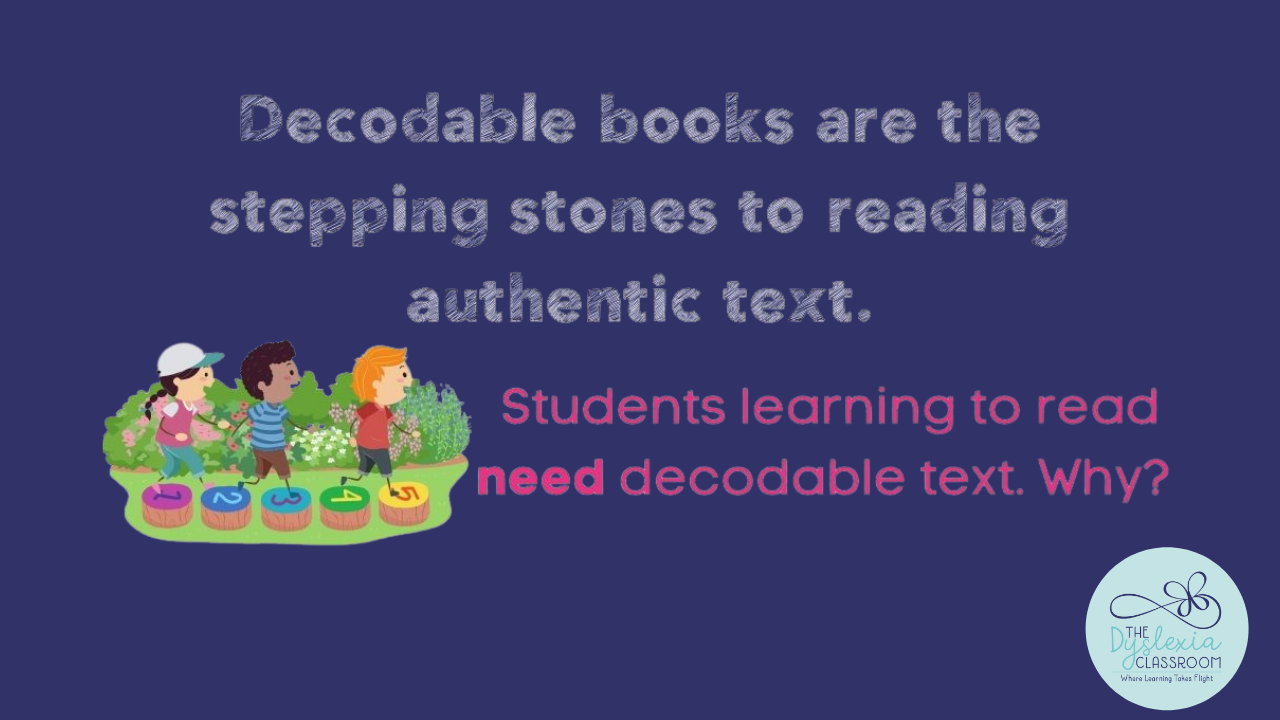
When I was in high school, I decided that I wanted to become a competitive diver. I was fascinated with those brave athletes who would climb the tower to the ten-meter platform and hurl their bodies off the top with grace and enter the water with the quietest splash. They made it look so easy.
I had played around a bit at the community pool and could do some of the introductory dives and flips, and yet, no one would expect me, as a novice diver, to climb to the top of the tower and be able to perform.
Instead, I met with my coaches every day before school at 6 am to learn the necessary skills. I practiced the same dives repeatedly, improving based on the immediate corrective feedback provided by my coach. With each gained skill, another was added, allowing me to gain the skills required to advance to compete at the collegiate level. Without the foundational stepping stones to gain skills, this wouldn't have happened.
Athletes are trained by establishing the necessary foundational...
Let's Talk About Nasals
Hi friends! This week, I'm going to continue our review of the consonant sound groupings. If you're working on implementing a sound wall, or you want to shift how you approach teaching phonics, then this week's post is for you. 😊
Research shows that our brain makes memory traces of sounds by paying attention to mouth formations. When we begin with the sound, we're laying the foundation for knowledge of graphemes, or letters. This anchors our phoneme-grapheme correspondences. In my work with students, I focus on this speech-to-print approach where I explicitly teach phonemes, or those individual speech sounds, to students. I begin by introducing the sound and connection to the mouth formation.
What about those nasal 👃 sounds?
If you haven't heard of nasals, you are not alone. Many programs or trainings may not introduce this concept, but I think you should and here's why. Consonants are usually grouped or taught according to their articulation features, or how the sound is made. Thes...
What in the World is a Fricative?
Hi, friends! Today, we're continuing our review of the consonant sound groupings. If you are working on implementing a sound wall or you want to shift how you approach teaching phonics, then this is for you.
In my work with students, we focus on the speech to print approach when we explicitly teach phonemes, or those individual speech sounds, to students. We begin by introducing the sound and connection to the mouth formation. Research shows that our brain makes memory traces of sounds by paying attention to our mouth formations. When we begin with this sound, we're actually laying the foundation for knowledge of graphemes. This anchors our phoneme-grapheme correspondences.
Consonants are usually grouped, or taught, according to their articulation features or how the sound is made. We can group some consonant sounds into voiced and unvoiced pairings. These pairings are grouped based on mouth formation, where the mouth placement is, where it's the same, and the only difference is if t...
Top Strategies to Teach Stop Sounds
Hi, friends! I've recently had quite a lot of requests to chat about the topic of teaching stop sounds. This week, I've created a video detailing effective ways to teach this. I've also included links and information about the resources that I reference in the video. You will find them below. 👇 Click on each image to see more of the product.
When we explicitly teach phonemes' articulatory features, we are helping to create links between the individual speech sounds and the letter representations. These mouth cards are designed to guide and support mouth placement and sound production directly.
The cards tell you where the sound comes from within our mouth (front, middle, or back of the mouth), the manner of articulation (what are the teeth, lips, and tongue doing), and the use of voice or unvoiced sound production to strengthen phonological awareness, reading, and spelling. These mouth formation cues are essential for anchoring sounds to letter representations, especially for ...

